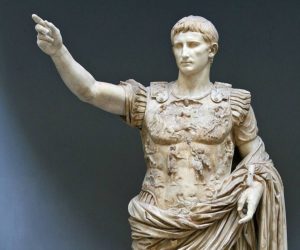Death of Jesus By Crucifixion?
Sometimes called the “swoon theory,” it is one of the common charges by critics and skeptics against the Resurrection contending Jesus of Nazareth did not die by crucifixion.[1] In fact, one of the world’s major religions teaches that Jesus never died on the cross, even if he was crucified![2]
Roman crucifixions were rife during the century before and after the fall of Jerusalem in 70 AD historically documented by renowned authorities of antiquity such as Josephus, Tacitus, Suetonius, Cicero and Seneca the Younger.[3] Declaring Jesus did not die by crucifixion defies these historical accounts.

Crucifixion by the Romans was fully intended to cause death under the most excruciatingly painful and humiliating circumstances. Victims could do nothing to save themselves after a group of military men had fastened the severely flogged victims, typically by nails, to wooden beams and suspended them above the ground.
Required for a certified death claim today, three facts are to be established: when death occurred; where it occurred and the identity of the person who died.*[4] Typically a coroner, law enforcement official, or medical expert are required to attest to these circumstances.
In the age of antiquity, confirmation of a death was basically the same requiring witnesses. No modern technologies and sciences were available meaning a death determination relied on observations and simple common sense – lifeless; not breathing; limp, cold and still; obvious mortal wounds or other morbid evidence.
All four Gospel accounts report that Jesus was killed by crucifixion, witnessed by many. Luke‘s account brought the outcome of the crucifixion to dramatic closure stating:[5]
LK 23:46 “Then Jesus, crying with a loud voice, said, “Father, into your hands I commend my spirit.” Having said this, he breathed his last.” (NRSV)
Roman quaternion, the execution team consisting of four guards and the exactor mortis, a centurion, were charged with crucifying Jesus.[6] At the risk of dire consequences for failure to perform their duty, their job was to ensure death on the cross was successfully carried out.[7]
MK 15:39 “So when the centurion, who stood opposite Him, saw that He cried out like this and breathed His last, he said, “Truly this Man was the Son of God!”’”(NKJV) [8]
An “excited utterance” made by the centurion is considered to be a factual, truthful statement making it an exception to the legal hearsay rule. United States Federal Law defines an “excited utterance” as being made spontaneously, under the influence of a startling event, before the witness has had an opportunity for reflection.[9]
Quaternion wanted to ensure Jesus was truly dead prompting a soldier to thrust a spear into his side. Convinced Jesus was dead, the quaternion decided not to break his legs to hasten death.[10]
In the Gospel account of John, the author “testified” that he witnessed the death of Jesus on the cross:
JN 19:35 “And he who has seen has testified, and his testimony is true; and he knows that he is telling the truth, so that you also may believe.” (NASB, NKJV)
Seven women are identified in the Gospel accounts as being present at the crucifixion: Jesus’ own mother Mary and her sister, Mary Magdalene, Mary the mother of James and Joseph, mother of the sons of Zebedee, Mary the wife of Clopas, Salome and many other women from Galilee.[11]
Witnessing the crucifixion and death of Jesus, Joseph of Arimathea, a member of the Jewish Council, reached the same conclusion as the exactor mortis, the quaternion and John:
JN 19:38 “…Joseph of Arimathea, who was a disciple of Jesus, though a secret one because of his fear of the Jews, asked Pilate to let him take away the body of Jesus.” (NRSV)
Leaving the three crosses bearing their victims under the guard of the quaternion, the centurion left his post to provide the confirmation to Pilate that Jesus was truly dead:
Mk 15:44-45 “Pilate was surprised to hear that he was already dead. Summoning the centurion, he asked him if Jesus had already died. When he learned from the centurion that it was so, he gave the body to Joseph.” (NIV)
Pilate officially affirmed that Jesus was dead. He then commanded the centurion to give the body of Jesus to Joseph of Arimathea.
While Joseph approached Pilate, Nicodemus went to buy burial spices. Nicodemus, another rich man and member of the Jewish Council, was a secret follower of Jesus out of fear of the Sanhedrin.[12]
Along the way back to Golgotha, Joseph was joined by Nicodemus with the burial spices.[13] Sunset was fast approaching and a quick burial preparation was needed before the Sabbath began.[14]
Up close and personal, Joseph and Nicodemus removed the body of Jesus from the cross, carried it to the nearby unused tomb of Joseph, wrapped it and applied at least 75 pounds of burial spices. Finished, they rolled a large stone in front the entrance of the tomb with the body of Jesus inside, witnessed by two women each named Mary from Galilee.[15]
MT 27:59-60 “And Joseph took the body and wrapped it in a clean linen cloth, and laid it in his own new tomb, which he had hewn out in the rock; and he rolled a large stone against the entrance of the tomb and went away.” (NASB)
Eleven people are identified in the Gospel accounts as eyewitnesses to the death of Jesus – four Roman quaternion, the centurion; two members of the Jewish Council; two blood relatives of Jesus including his own mother; two mothers of Disciples; and one Disciple as well as Pilate’s legal affirmation.
Diversity of these witnesses, in addition to the strength in numbers, builds a level of unimpeachable evidence in today’s court of law. Noteworthy is that Judaism has always acknowledged the death of Jesus by crucifixion.
Did Jesus truly die by crucifixion?
* When a victim cannot be identified, the name John Doe or Jane Doe are often substituted.
Updated April 27, 2025.
REFERENCES:
[1] Goldman, Russell. “Jesus Christ May Not Have Died on Cross?” ABC News. 2010. <https://abcnews.go.com/GMA/jesus-christ-died-cross-scholar/story?id=11066130> Samuelsson, Gunnar. Crucifixion in Antiquity. 2011. Tübingen, Germany: Mohr Siebeck. <https://www.academia.edu/4167205/Crucifixion_in_Early_Christianity> Bowen, Bradley. “Defending the Swoon Theory – Part 1: What is the Swoon Theory?” Patheos.com. 2019. <https://www.patheos.com/blogs/secularoutpost/2019/06/01/defending-the-swoon-theory-part-1-what-is-the-swoon-theory> “The Swoon Theories.” ReviewOfReligions.org. 2010. <https://www.reviewofreligions.org/2323/the-swoon-theories> Greenberg, Eric J. “Jesus’ Death Now Debated by Jews.” Jewish Journal. 9 Oct. 2003. Reprinted from The Jewish Week. <http://jewishjournal.com/news/world/8546>
[2] Assaqar, Monqith Ben Mahmoud. Central Intelligence Agency. “Was Jesus Crucified For Out Atonement?” n.d. p 6. <https://www.cia.gov/library/abbottabad-compound/CE/CE620DF8125A29EA4358631CA285D178_DID_JESUS_DIE_ON_THE_CROSS-.pdf> “Did Jesus die on Cross?” Islamic Circle of North America. 2016. <https://www.icna.org/did-jesus-die-on-cross> Quran Surah 4:157. Trans. Abdullah Yusuf Ali. n.d. <http://search-the-quran.com/search/Surah+An-Nisa/8>
[3] Josephus, Flavius. The Complete Works of Josephus. William Whitson. 1850. <http://books.google.com/books?id=e0dAAAAAMAAJ&printsec=frontcover&source=gbs_ge_summary_r&cad=0#v=onepage&q&f=false> Lucian of Samosata. “The Death of Peregrine.” The Works of Lucian of Samosata. Volume IV. p 82 <http://www.sacred-texts.com/cla/luc/wl4/wl420.htm> Cicero, Marcus Tullius. “Secondary Orations Against Verres. Book 5. 70 B.C. <https://web.archive.org/web/20160430183826/http://www.uah.edu/student_life/organizations/SAL/texts/latin/classical/cicero/inverrems5e.html> Tacitus, Gaius Cornelius. The Annals. Books X, XV 109 AD. <http://classics.mit.edu/Tacitus/annals.html> Seneca, Lucius Annaeus. “To Novatus on Anger+.” Moral Essays. “Seneca’s Essays Volume I.” Book III. The Stoic Legacy to the Renaissance. 2004. <http://www.stoics.com/seneca_essays_book_1.html#ANGER1> Seneca. “De Vita Beata+.” “To Gallio On The Happy Life.” Moral Essays. “Seneca’s Essays Volume II.” Book VII. The Stoic Legacy to the Renaissance. 2004. <http://www.stoics.com/seneca_essays_book_2.html#%E2%80%98BEATA1> Suetonius (C. Suetonius Tranquillus or C. Tranquillus Suetonius). The Lives of the Twelve Caesars. “Julius Caesar.” #74. <http://penelope.uchicago.edu/Thayer/E/Roman/Texts/Suetonius/12Caesars/Julius*.html> “Crucifixion.” JewishEncyclopedia.com. 2011. <http://jewishencyclopedia.com/articles/4782-crucifixion>
[4] “Physicians’ Handbook on Medical Certification of Death.” 2003 Revision. p 9. Department of Health and Human Services, Center for Disease Control and Prevention, National Center for Health Statistics. <http://www.cdc.gov/nchs/data/misc/hb_cod.pdf> “Death Certificate Requirements.” Education Requirements. 2015. <https://web.archive.org/web/20181031044856/http://www.educationrequirements.org/death-certificate-requirements.html> “Certificate of Death.” Two Package Template. photo. n.d. <https://twopackage.com/12-death-certificate-templates-free-download>
[5] Luke 23:46. Most English translations use these exact words. CR Matthew 27:50; Mark 15:39. Gospels Matthew 27:58; Mark 15:43; Luke 23:50-52; John 19:38. CR Mathew 27:57; Mark 15:43; Luke 23:50; John 19:38.
[6] Zugibe, Frederick T. “Turin Lecture: Forensic and Clinical Knowledge of the Practice of Crucifixion.” E-Forensic Medicine. 2005. <http://web.archive.org/web/20130925103021/http://e-forensicmedicine.net/Turin2000.htm>
[7] Seneca, Lucius Annaeus. Moral Essays. “Seneca’s Essays Volume I.” 1928-1935. Book III. “To Novatus on Anger+.” Book I, p xviii. 2. The Stoic Legacy to the Renaissance. <http://www.stoics.com/seneca_essays_book_1.html#ANGER1> Brand, Clarence Eugene. Roman Military Law. pp 80, 99-100, 103, 141-142. 2011. https://books.google.com/books?id=TWexDAAAQBAJ&pg=PA91&lpg=PA91&dq=sacramentum+violation&source=bl&ots=cx2dAVJJkA&sig=ACfU3U0hRifTdhWkPhOVpdke7eZAyPEseQ&hl=en&ppis=_e&sa=X&ved=2ahUKEwjsi7Xz___nAhVDWK0KHeYHDLMQ6AEwBXoECAwQAQ#v=onepage&q=insubordination&f=false>
[8] CR Matthew 27:54, John 19:30.
[9] “Excited Utterance.” Cornell University Law School. <http://www.law.cornell.edu/wex/excited_utterance> “Federal Rules of Evidence Article VIII. Cornell University Law School. Rule 803. Exceptions to the Rule Against Hearsay.” <http://www.law.cornell.edu/rules/fre/rule_803>
[10] John 19:31-33.
[11] John 19:35.
[12] Mark 15:40-41. CR Luke 23:48-49. John 19:25. CR Matthew 4:21-22; Mark 1:19-20, 10:35; Luke 5:10.
[13] Mathew 27:57; Mark 15:43; Luke 23:50.John 3:1; 7:45; 19:39.
[14] John 19:39. See NetBible footnote #5 conversion of Roman pounds to U.S. measurement pounds. <http://classic.net.bible.org/verse.php?book=Joh&chapter=19&verse=39>
[15] Matthew 27:60-61. CR Luke 23:55.

